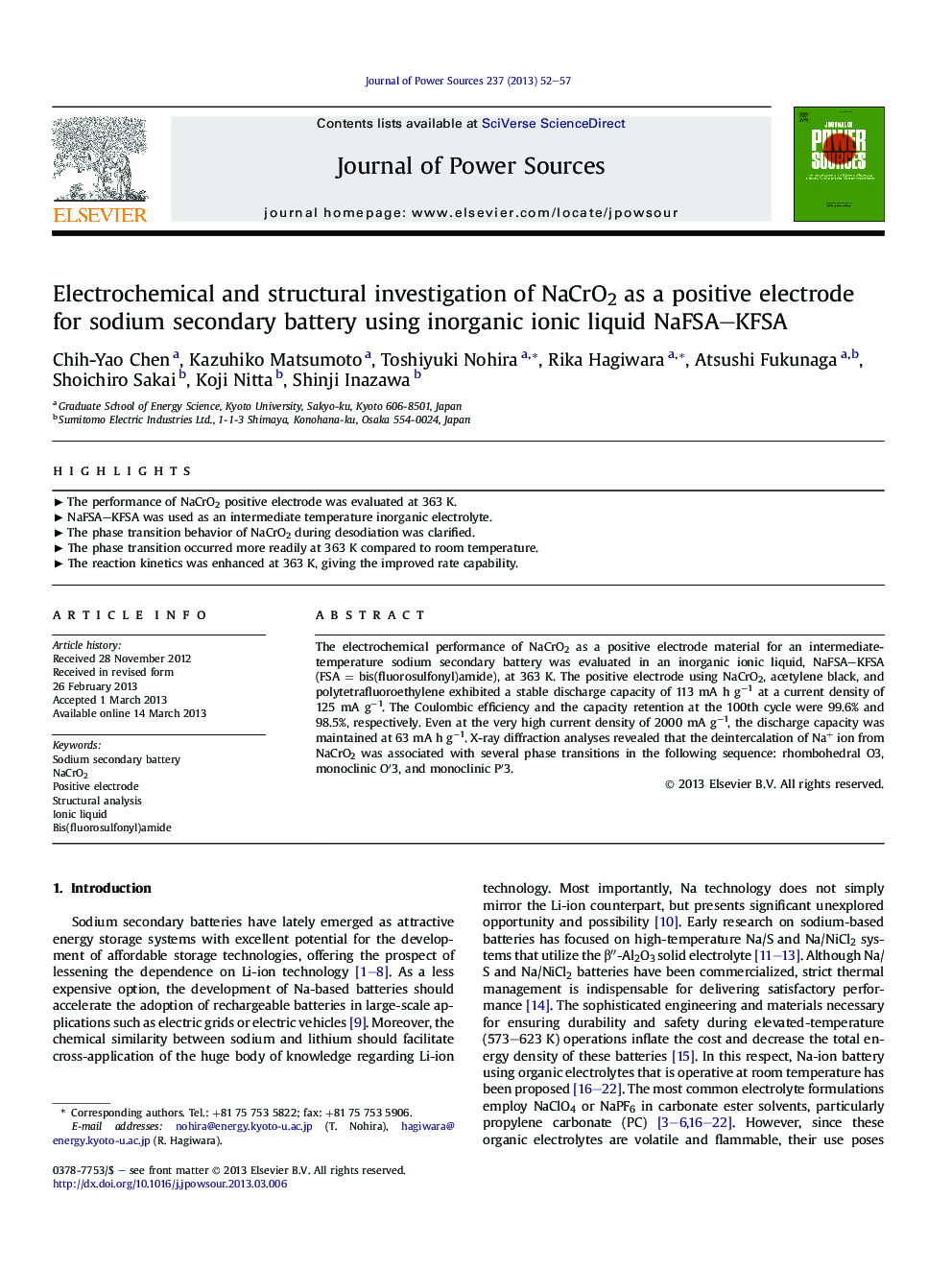| Article ID | Journal | Published Year | Pages | File Type |
|---|---|---|---|---|
| 1287725 | Journal of Power Sources | 2013 | 6 Pages |
The electrochemical performance of NaCrO2 as a positive electrode material for an intermediate-temperature sodium secondary battery was evaluated in an inorganic ionic liquid, NaFSA–KFSA (FSA = bis(fluorosulfonyl)amide), at 363 K. The positive electrode using NaCrO2, acetylene black, and polytetrafluoroethylene exhibited a stable discharge capacity of 113 mA h g−1 at a current density of 125 mA g−1. The Coulombic efficiency and the capacity retention at the 100th cycle were 99.6% and 98.5%, respectively. Even at the very high current density of 2000 mA g−1, the discharge capacity was maintained at 63 mA h g−1. X-ray diffraction analyses revealed that the deintercalation of Na+ ion from NaCrO2 was associated with several phase transitions in the following sequence: rhombohedral O3, monoclinic O′3, and monoclinic P′3.
► The performance of NaCrO2 positive electrode was evaluated at 363 K. ► NaFSA–KFSA was used as an intermediate temperature inorganic electrolyte. ► The phase transition behavior of NaCrO2 during desodiation was clarified. ► The phase transition occurred more readily at 363 K compared to room temperature. ► The reaction kinetics was enhanced at 363 K, giving the improved rate capability.
